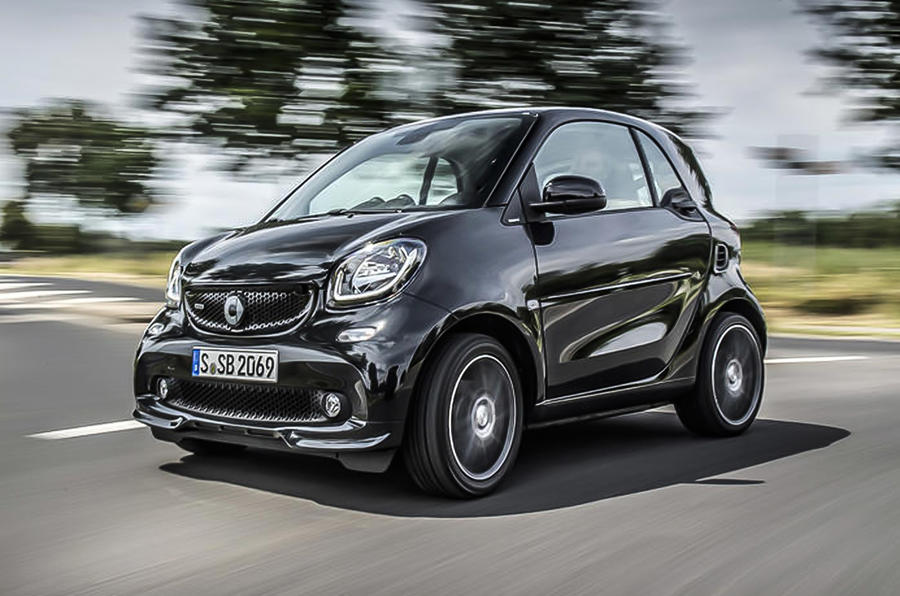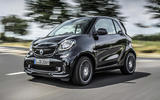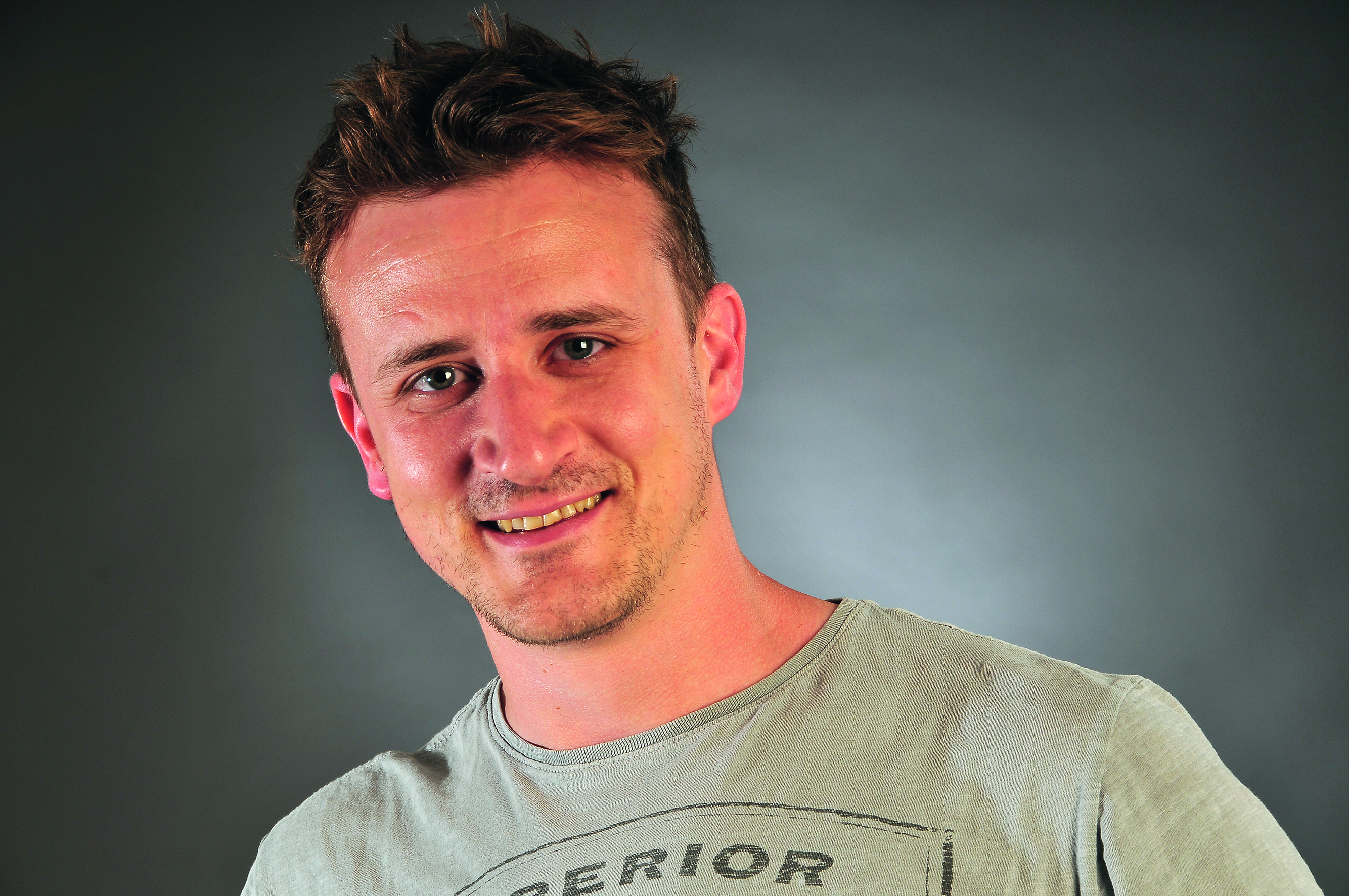What is it?
City cars are all about nipping around town, but what if you desire a bit more nip from your neatly packaged, urbane urban runaround?
One for the suggestion box is this new Smart Fortwo Brabus, a car that so perfectly fits the term dinky that you could almost grab it by the roof and give it a playful zoom across the kitchen floor. Park it next to a modern Fiat 500 Arbath and suddenly Carlo’s sporty little icon seems borderline gargantuan.
So has Brabus given the Fortwo the acceleration of a 1:43-scale model powered by the arm of an overexcited five-year-old? Well, not really, but it is pokier. Upgrades include an increase in fuel rail pressure and improved engine breathing on both the inlet and exhaust sides, giving modest increases of 18bhp and 25lb ft and resulting in 0-62mph in 9.5sec.
Still, that’s quick enough for threading along narrow city streets, and to keep it clamped to the cobbles the suspension has been given a fettling. Ride height is 10mm lower, new springs and dampers add a 20% increase in all-round stiffness and there’s a further boost at the front courtesy of a thicker anti-roll bar.
Lastly, revised electric power steering software aims to sharpen up feedback through the wheel, while more relaxed ESP settings should mean less nannying and a bit more playfulness.
What's it like?
Well, it’s as you’d expect it to be from the stats: spirited, yes, but not quick. Despite Brabus shortening the gear ratios, the revs build steadily in each gear. It will quite happily zip up to 70mph, though, and while it’s limited to 103mph, it’ll get there relatively easily if you find an open stretch of autobahn.
At idle the little turbo triple has an arrant lumpiness, especially as the air-con compressor cuts in and out, but spin it past 1000rpm and it’s quite a syrupy thing as it hums away behind you. Brabus has added a sports exhaust, too, but if you're used to its regular rambunctious creations, the Fortwo is comparatively subdued; other than a bit of boom at idle and on the overrun, it’s not had much of an effect.
Throttle response isn’t ideal. Boost comes in quite abruptly at 2000rpm, but even when you step back on the accelerator at twice this crank speed you wait, then bam, a second later it surges off. This does make smooth driving a learnt art, rather than the intuitive ABC process that better linearity brings.
The dual-clutch automatic gearbox doesn't help matters. It’s smooth enough between the gears – although not amazingly quick by modern standards – but feels clunky when you’re immersed in the snarl of stop-start city traffic. But escape the confines of the urban sprawl and find freedom in fast, flowing country roads and the manual paddle shifts become impressively obedient to each finger twitch.
Open roads show up another limitation, though: poor body control. Brabus may have made tweaks to produce more incisiveness through the twisties than the standard car, but it’s no miniature hot hatch. Turn in to a fast bend and the body seems a step behind, taking a moment or two to settle before ending up at a mildly jaunty angle. Any mid-corner disturbances along the route don’t help, creating little shimmies and wobbles that, if you are on it, induce various clenching actions throughout your body.





















Join the debate
Add your comment
My wife has a 2010 Brabus
It pops and farts on the overrun, whooshes from the dump valve and generally makes me giggle! Yes, the gearchange is painfully slow compared to most newer DSG-style boxes, but you learn to adjust to suit it. Pound for pound, great value for money, if not to be taken too seriously!
Buy an Abarth and save a grand!
Also with the Smart's longer length, it can no longer fit sideways into parking spaces (try it and see how quickly you get a parking ticket!) so completely removes its USP.
A small omission